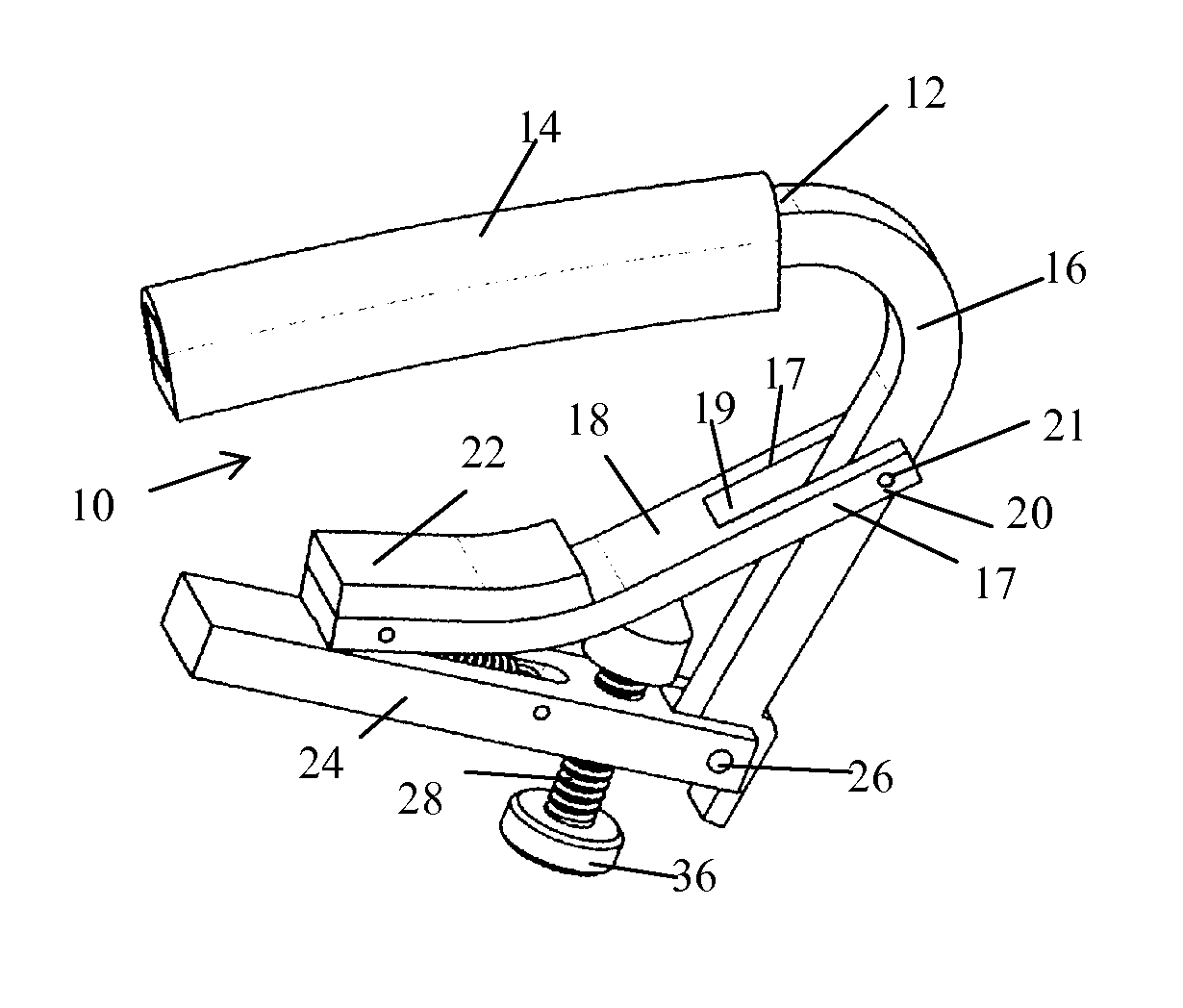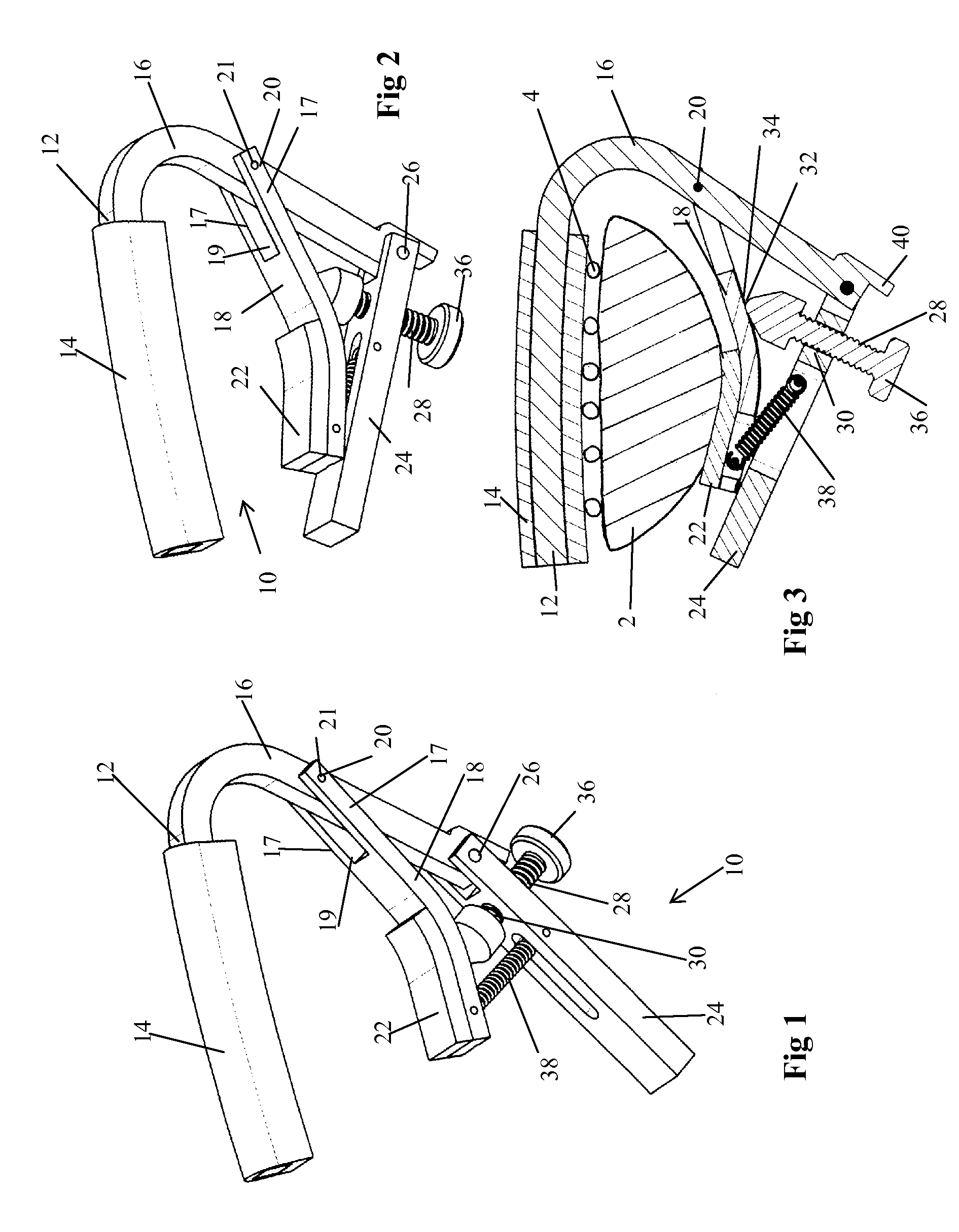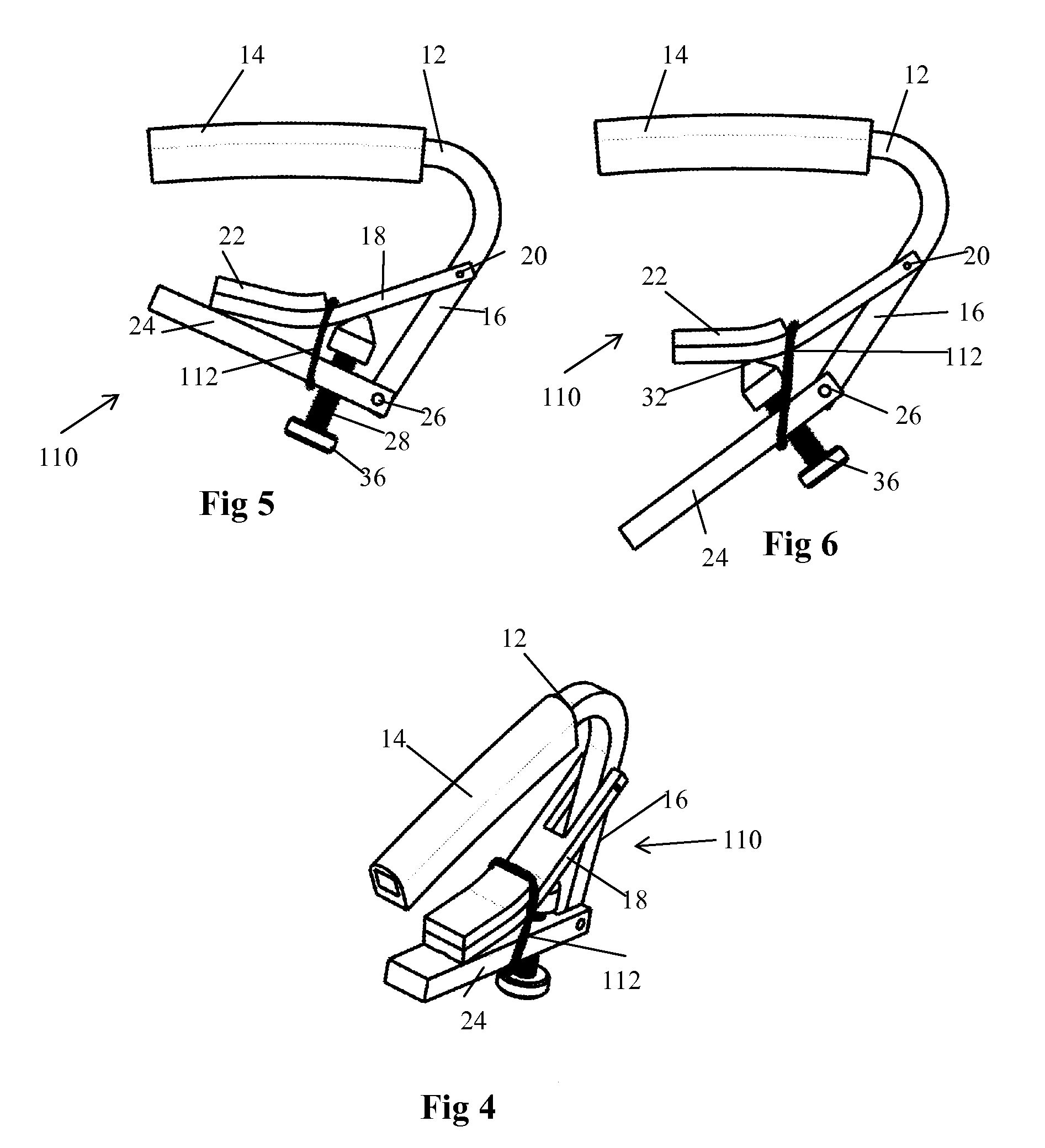Adjustable lever arm capo
a lever arm and capo technology, applied in the field of capo, can solve the problems of increasing the difficulty of adjustment, reducing the lateral and shear load of the adjuster screw and the linkage, and reducing so as to reduce the stress of the lever arm and the capo, the effect of compact and integrated assembly and reduced lateral load
- Summary
- Abstract
- Description
- Claims
- Application Information
AI Technical Summary
Benefits of technology
Problems solved by technology
Method used
Image
Examples
Embodiment Construction
[0036]In the following description of the invention, certain terminology will be used for the purpose of reference only, and are not intended to be limiting. Terms such as “upper”, “lower”, “above”, “below”, “rightward”, “leftward”, “clockwise”, and “counter clockwise” refer to directions in the drawings to which reference is made. Terms such as “inward” and “outward” refer to directions toward and away from, respectively, the geometric centre of the component described. Terms such as “front”, “rear”, “side”, “left side”, “right side”, “top”, “bottom”, “horizontal”, and “vertical” describe the orientation of portions of the component within a consistent but arbitrary frame of reference which is made clear by reference to the text and the associated drawings describing the component under discussion. Such terminology will include the words specifically mentioned above, derivatives thereof, and words of similar import.
[0037]Referring to FIGS. 1 to 3, a capo 10 according to a first emb...
PUM
 Login to View More
Login to View More Abstract
Description
Claims
Application Information
 Login to View More
Login to View More - R&D
- Intellectual Property
- Life Sciences
- Materials
- Tech Scout
- Unparalleled Data Quality
- Higher Quality Content
- 60% Fewer Hallucinations
Browse by: Latest US Patents, China's latest patents, Technical Efficacy Thesaurus, Application Domain, Technology Topic, Popular Technical Reports.
© 2025 PatSnap. All rights reserved.Legal|Privacy policy|Modern Slavery Act Transparency Statement|Sitemap|About US| Contact US: help@patsnap.com



